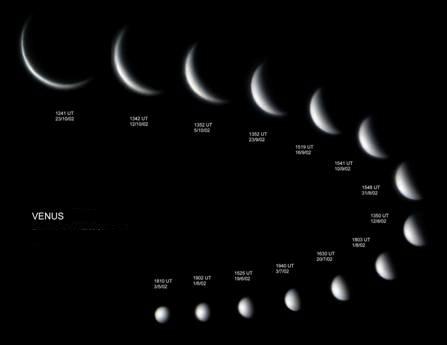The Three Vessels
by Christopher E. Johnsen
© 2016

[HOME]
"He [Kvasir] went up and down the earth to give instruction to men; and when he came upon invitation to the abode of certain dwarves, Fjalar and Galarr, they called him into privy converse with them, and killed him, letting his blood run into two vats and a kettle. The kettle is named Ódrerir, and the vats Són and Bodn; they blended honey with the blood, and the outcome was that mead by the virtue of which he who drinks becomes a skald or scholar.:"
—Skáldskaparmál (V), A. G. Brodeur's translation
The two dwarves mixed the blood with honey and fermented it and the mixture became the Mead of Poetry – starkly different from regular mead because Kvasir’s blood had been mixed in with it - there is a special quality within it that causes one who partakes of it to become a poet or scholar. Kvasir’s blood had become the Mead of Poetry and the name itself “Kvasir’s blood” (Old Norse “kvasis dreya”) is a skaldic kenning for poetry.

Gilling was a giant who was also murdered by the dwarves Fjalar and Galar. Galar then killed Gilling’s wife by dropping a millstone on her head. Gilling’s son, the giant Suttung, found the dwarves and threatened to tie them to a rock in the ocean that would be submerged by the rising tide. They begged Suttung not to drown them and offered him the mead of poetry they had made from Kvassir’s blood to spare their lives. Suttung took the mead and hid it in the center of the mountain Hnitbjorg in three containers and commanded his daughter Gunnlöð to stand guard over it.
Odin, after deciding to obtain the mead, disguised himself and worked for Baugi, Suttung's brother, a farmer, for a whole summer, and asked him only for a small sip of the mead for his wages, which Suttung refused. Odin convinced Baugi to drill into the mountain with an auger named Rati so that he could steal a sip of the mead to pay him for his work.

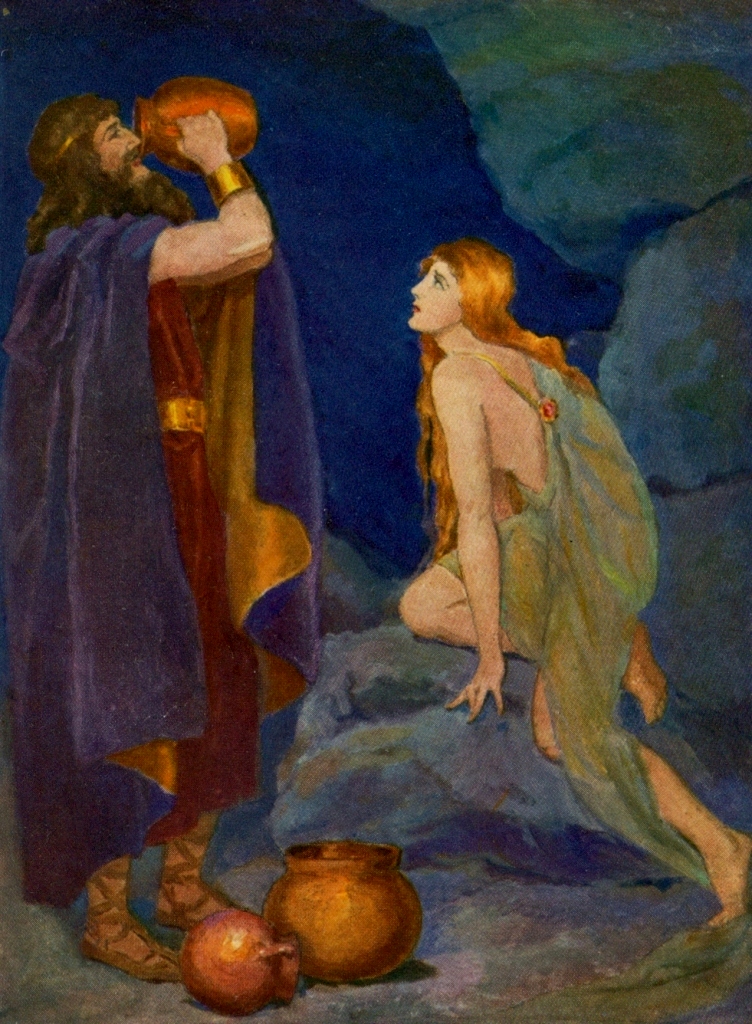
Odin steals the mead from Gunnlod
Katherine Pyle
Vel keypts litar —Hávamál (140) |
Of a well-assumed form |
In another stanza (140), the meaning of Óðrerir depends on the
translation:
Fimbulljóð níu |
Potent songs nine |
Óðrerir seems to refer to a vessel, but other interpretations of “ausinn Óðreri” could also mean that Óðrerir is the mead itself or perhaps referring to the mead by its container.
So - why are there 3 vessels and what is it that Odin is sipping from them (other than special mead)?
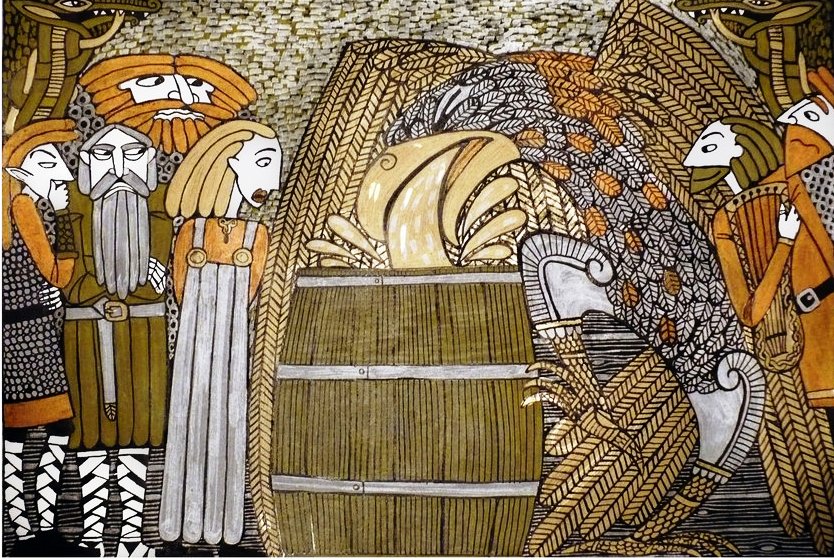
Odin returns with the Mead of Poetry
by Helliam at Deviant Art
The root of the name, kvas- in Kvas-ir, likely stems from the Proto-Germanic base *kvass-, meaning to “to squeeze, squash, crush, bruise”. Linguist Albert Morey Sturtevant states in reference to this base that “fluids may result from the crushing or pressing of an object (cf. Dan. kvase ‘to crush something in order to squeeze out the juice’).
There is a drink called Kvass that is a traditional Slavic and Baltic fermented beverage usually made from black or regular rye bread – usually in the summer. It has been especially popular in Russia, Latvia, Lithuania, Belarus and Ukraine, but it is also well known throughout Estonia and Poland, and Georgia, Kazakhstan and Armenia. The color of the bread used contributes to the color of the resulting drink. It is classified as a non-alcoholic drink by Russian standard, as the alcohol content from fermentation is typically less than 1.2%.
Kvass is made by the natural fermentation of bread, such as wheat, rye, or barley, and sometimes flavored using fruit, berries, raisins, or birch sap collected in the early spring. Often times, poor peasants would brew Kvass out of stale, left over bread crumbs, leading to a phrase about brewing beer from breadcrumbs meaning to be able to make ends meet. Kvass was a peasant’s drink. A brew started by spittle doesn’t denote a high brow beverage – but it is a drink that the common man could identify with.
In Tolstoy's War and Peace, French soldiers after trying kvass upon going into Moscow, enjoyed it but referred to it as "pig's lemonade." This would, understandably, explain why beer and mead dominated in Germany and Scandinavia, but it shows that the “tradition” with Kvass was to mix other substances into the brew to give it different taste and perhaps to make it stronger.
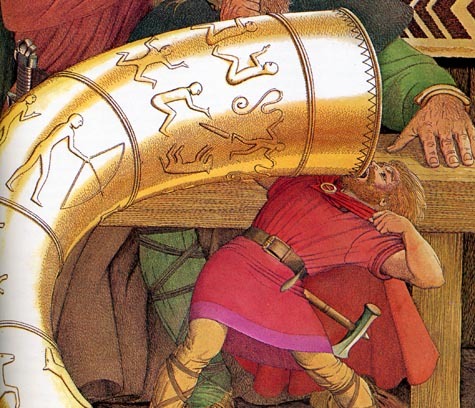
Thor drinking from Utgard-Loki's Horn
Giovanni Caselli
The Vedic god Indra, was a great Soma drinker, and counterpart to the Norse god Thor with whom he is usually equated - both were great drinkers of this “special” mead. Before he confronted the dragon Vritra, Indra drank large amounts of Soma to gain the strength he needed to defeat it. Soma, like the Norse “apples” of eternal youth (probably the same substance from which the Soma mead was made) provided the Vedic gods their immortality.
It was also a drink for mortals, which was golden and made from the Soma plant. This drink brought visions and ecstasy and helped inspire poets to create verse. Soma was the bridge between the mortal world and that of the gods (it is the same as Haoma in Persian mythology). Soma was also one of the more important gods in the Rig Veda since 20 hymns and one whole book are devoted to him. He has multiple forms; a celestial bull, a bird, a giant, lord of plants, sometimes a human. A Rgvedic hymn states:
“Indra, the killer of Vrtra, the first born of the snakes,
the generous one, drank, filled with ardent desire,
three vessels of the pressed Soma.” RV 1.32.3
The Sumerians also recorded that this life force was stored within the moon. A Sumerian ‘ersemma’ hymn to Nannar emphasizes the intoxicating quality of the life force stored in the moon and the “Hymn to Ninkasi” is both a song of praise to Ninkasi, the Sumerian goddess of beer, and an ancient recipe for brewing. (The Grail Two Studies Leopold Von Schroeder (1910) & Alexander Jacob, (2014) Australia).
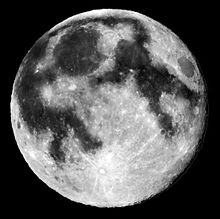
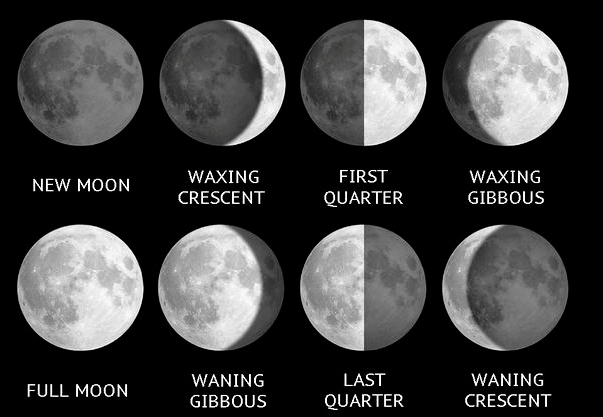
Mercury is the least conspicuous of the visible planets and never moves further than 28° from the Sun. Since they need to be at least 12° apart for Mercury to be visible against the Sun's light, its appearance is limited to a short period just before sunrise or just after sunset. In northern Europe, it can be seen on no more than twenty days each year and has phases that are just able to be made out with unassisted vision.

The planet Venus also has a sequence of phases similar in appearance to the moon's phases. It presents a full image when it is on the opposite side of the Sun and shows a quarter phase when it is at its maximum elongation from the Sun. Venus appears as a thin crescent as it comes around to the near side between the Earth and the Sun and presents its new phase when it is between the Earth and the Sun. The full cycle from new to full to new again takes 584 days (the time it takes Venus to overtake the Earth in its orbit).
